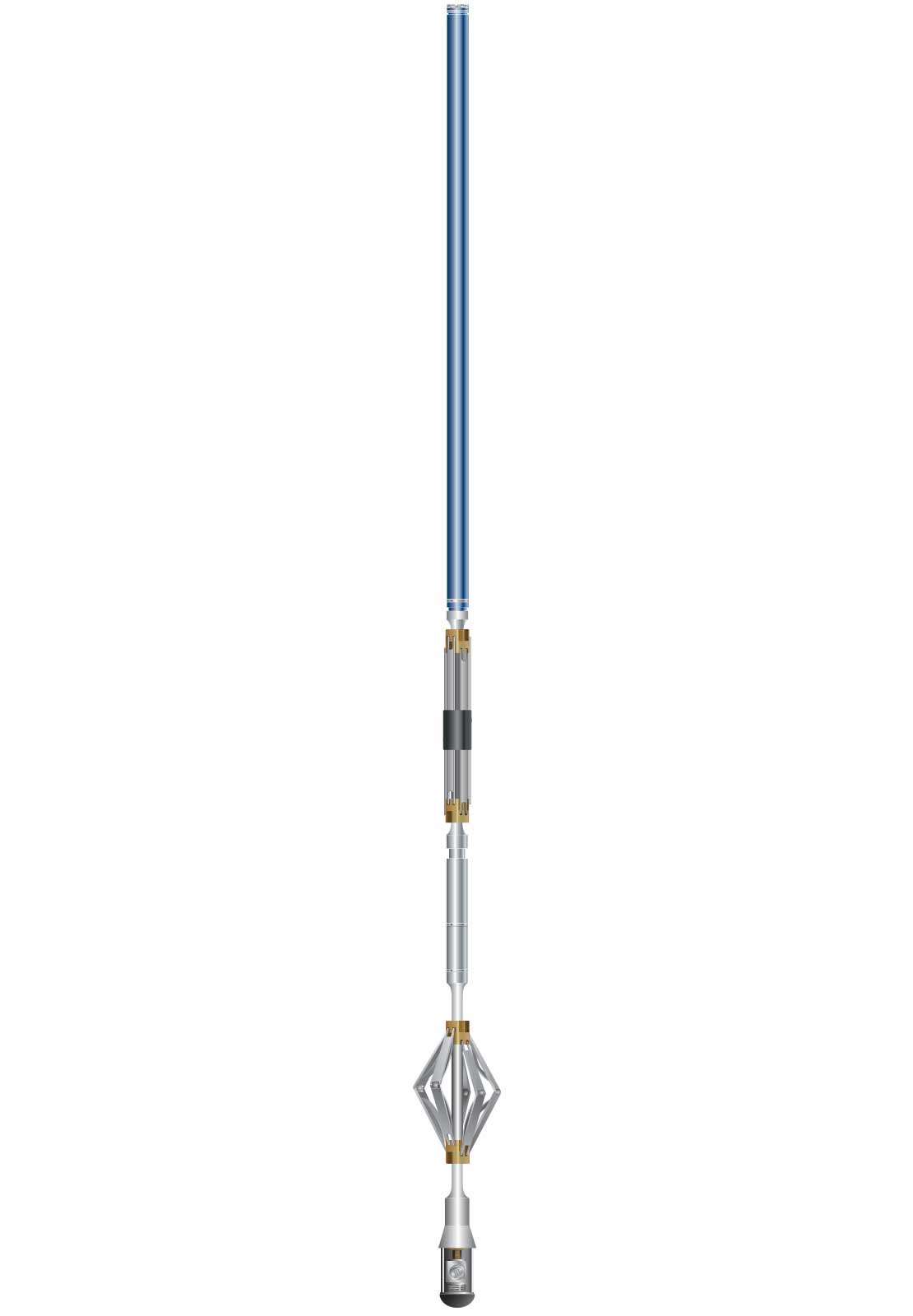USI
Ultrasonic imager

Scan the casing condition and cement bond around the entire casing circumference
The USI™ ultrasonic imager delivers an accurate, comprehensive, high-resolution confirmation of the pipe-to-cement bond quality and downhole pipe condition in real time. Casing inspection and monitoring applications include corrosion detection, identification of internal and external damage or deformation, and casing thickness analysis for collapse and burst pressure calculations.
Measure the internal and external casing interfaces
To scan the entire casing circumferences for full 360° data coverage, the USI ultrasonic imager uses a single transducer mounted on an ultrasonic rotating sub (USRS) on the bottom of the tool. The transmitter emits ultrasonic pulses between 200 and 700 kHz and measures the received ultrasonic waveforms reflected from the internal and external casing interfaces.
The rate of decay of the waveforms received indicates the quality of the cement bond at the cement-casing interface, and the resonant frequency of the casing provides the casing wall thickness required for pipe inspection. The resulting 360° data coverage enables evaluating the quality of the cement bond and determining both the internal and external condition of the casing. The very high angular and vertical resolutions of the USI imager can detect channels as narrow as 1.2 in [3.05 cm].
Cement bond, thickness, internal and external radii, and self-explanatory maps are generated in real time at the wellsite. The color-coded images help in assessing cement coverage in the annulus, including in identifying channels in the cement that affect zonal isolation and any tubular damage.
If the chrome content of the tubing or casing is higher than 13%, contact your local SLB representative.

